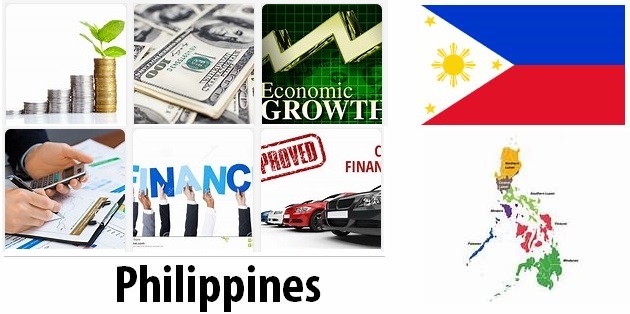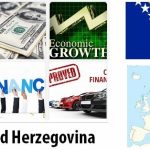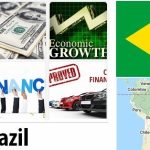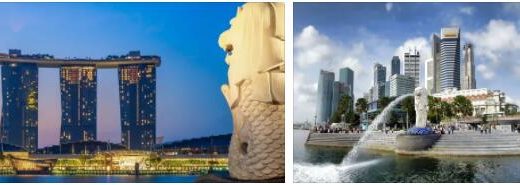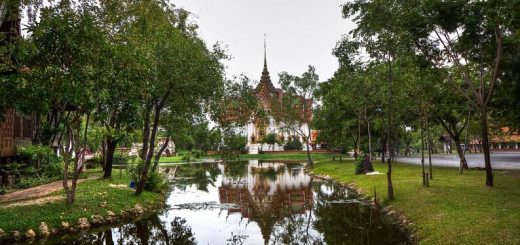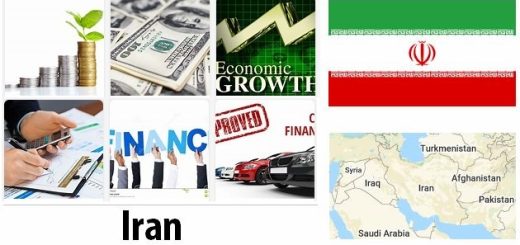Philippines Economy Facts
Economical overview
For a long time, agriculture, fishing and forestry were the backbone of the Philippines’ economy, but nowadays the service sector and manufacturing industry mean more to the economy as a whole. There is also an extensive informal sector of the economy, mainly in the larger cities. Of significant importance to the economy is the money that Filipinos send abroad to their home country. In 2018, this amounted to about $ 34 billion, which was just under a tenth of GDP.
The financial sector has increased in importance since the 1980s and tourism provides significant income. New niches in the service sector have also grown rapidly. It may be that foreign IT companies move customer support and development to the Philippines or the production of animated films, market surveys or companies that support healthcare institutions (printing journal entries and more). These industries, which are concentrated in Manila, Cebu City, Cagayan de Oro and Iloilo, employed about 1 million Filipinos in 2017 and were estimated to bring in about $ 20 billion a year. What has attracted companies to the Philippines is said to be good access to university-educated workers who also had good knowledge of American culture.
- Countryaah.com: Major imports by Philippines, covering a full list of top products imported by the country and trade value for each product category.
Industrial goods (mainly electrical and electronic equipment) account for most of the exports. The export industry is dependent on the business cycle in Japan, the US and China where a large part of the goods goes.
In the 1960s, the Philippines was one of the region’s richest countries, but as growth accelerated in neighboring countries, the Philippine economy stagnated. Only in the 1990s did the development turn. In 1996, GDP rose by more than 7 percent, but the following year the country was included in the Asian economic crisis. Export successes for the telecom industry in 1999 and 2000 led to an economic recovery, but reduced demand for IT goods in the US meant a new decline in 2001. However, the Philippine economy managed the global financial crisis of 2008 relatively well, thanks in large part to the flow of money from Filipinos abroad. This has given the Filipino households more money to move around and private consumption has contributed to high growth figures. In 2008–2017, growth averaged nearly 7 percent per year. Inflation also seemed to pick up momentum from autumn 2018.
- Abbreviationfinder.org: Check this abbreviation website to find three letter ISO codes for all countries in the world, including PHL which represents the country of Philippines. Check findjobdescriptions to learn more about Philippines.
Since the 1990s, the economy has been liberalized. State monopolies have been abolished, currency restrictions have been removed and a number of state companies have been privatized. The revenues from the sale of state-owned enterprises helped the state from 1992 to show a small surplus in the state budget. From 1998 it ended up again at minus.
However, the deficits decreased from the 2010s, partly because they managed to keep spending down, but also because the state got more in tax). New excise taxes were introduced, for example, for alcohol and tobacco. Greater efforts have also been made to access taxpayers and reduce corruption in the public sector. During Benigno Aquino’s time in power, 2010 to 2016, efforts were made to improve roads, ports, airports and electricity grids, partly with the help of private money. The shortcomings in infrastructure are an important hindrance in developing the economy. Rodrigo Duterte’s government, which took office in 2016, promised even greater investment in new infrastructure, including a new subway system in Manila. Money for it, according to the plans, will come via higher taxes on, for example, coal, cars, gasoline and other oil products, soft drinks and beauty operations.
Foreign investments have been relatively low, but they have risen steadily since 2010. However, they are only a fraction when compared with some other countries within the partner organization Asean such as Singapore and Indonesia. Most of the investments in 2017 came from companies from the Asian countries, Japan, China and the Netherlands.
Foreign debt represents a heavy burden for the country, although it has decreased somewhat in recent years. At the same time, foreign investment has increased, but it is nowhere near as large as in other countries in the region.
Traditionally, the Philippines has a trade deficit, ie imports are larger than exports.
In August 2015, the so-called referrals from Filipinos working abroad for the first time declined since 2003. According to some analysts, this could be a sign that more Filipinos had found work at home. And that the IT sector in the country would soon generate as much revenue as the referrals. Thereafter, they increased again, but the growth rate has leveled off, largely because less money than before is sent home from the countries of the Middle East. This is due to lower oil prices, efforts in the Gulf states to reduce dependence on foreign labor and a temporary halt for guest workers in Kuwait in the spring of 2018 (see Calendar).
FACTS – FINANCE
GDP per person
US $ 3 103 (2018)
Total GDP
US $ 330,910 million (2018)
GDP growth
6.2 percent (2018)
Agriculture’s share of GDP
9.3 percent (2018)
Manufacturing industry’s share of GDP
19.1 percent (2018)
The service sector’s share of GDP
60.0 percent (2018)
Inflation
2.5 percent (2019)
Government debt’s share of GDP
38.9 percent (2018)
External debt
US $ 73,080 million (2017)
Currency
Philippine Peso
Assistance per person
US $ 2 (2017)
2010
December
Peace talks ongoing between the government and the NPA
Representatives of the Communist movement and government meet in Hong Kong and agree to begin formal peace talks in 2011. Both sides announce a ceasefire over the Christmas holidays.
Court says no to truth commission
The Supreme Court ruled that the decision to form a Truth Commission to investigate corruption allegations against former President Gloria Macapagal Arroyo is contrary to the Constitution.
October
Human Rights Watch criticizes Aquino
The human rights organization Human Rights Watch criticizes President Aquino because he has not taken any measures to police and military to be tried for human rights violations.
The United States promises new support
President Aquino visits the United States and promises US support for nearly $ 3 billion.
August
Hostage frame in Manila
A retired police officer hijacks a bus in Manila and takes about twenty Hong Kong tourists hostage. Police intervene but eight hostages are killed.
May
Benigno “Noynoy” Aquino III wins the presidential election
Benigno “Noynoy” Aquino III wins the presidential election on May 10 with just over 42 percent of the vote, against 26 percent of former President Joseph Estrada. Estrada’s pair horse Jejomar Binay wins by a marginal margin in the vice presidential election. The turnout is just over 75 percent.
February
Nearly 200 people are being prosecuted for the Maguindanao massacre
196 people are indicted for involvement in the Maguindanao massacre (see November 2009 and Political system). In June, a witness was shot dead.
